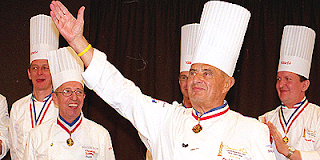
I have a real weakness for donuts, but not just any donuts. I love good 'ole fashioned cake donuts.
Dunkin' Donuts are good, but not great. Krispy Kremes are just okay. (If I liked pastry donuts, maybe I'd have a better opinion of Krispy Kremes since pastry donuts are their specialty.) Y'see, I am a dunker, and that's why cake donuts are my fancy. Dipping pastry donuts in a nice, hot cup of java just doesn't work very well. To me, a glazed pastry donut is the
Tang of the donut wonderful -- very easy to pass up. I know pastry donuts have a lot of devoted fans, but I'm definitely of the cake-donut persuasion.
My favorite donuts of all are apple-cider donuts. As the name suggests, real apple cider is added to the batter, and it produces a subtle, yet marvelous taste. You can get a very good apple-cider donut from
Marker-Miller Orchards, which is near Winchester, Va. (about an 1 hour and 25 minutes from Washington, D.C.). I drive out there once or twice during the fall months. Marker-Miller has a great selection of apples and other produce, and they make their apple-cider donuts fresh on the weekends. They are slightly crispy with a soft, cakey texture inside. Very good.
My favorite apple-cider donuts are made by
Delicious Orchards, which is located in the small New Jersey town of Colt's Neck. They are simply fantastic. Delicious Orchards makes apple-cider donuts in three forms: plain, cinnamon-sugar and powdered-sugar. All three are wonderful, although the plain work best for dunking purposes. Colt's Neck is just over an hour from New York City.
If you happen to be in southeastern Wisconsin, good apple cider donuts can be found at
Awe's Apple Orchard in the town of Franklin, 30 minutes west of Milwaukee.
Inside Washington, the donut landscape is not very impressive. Yet there is hope for donut lovers who yearn for something beyond the Krispy Kreme-Dunkin' Donuts world. Excellent donuts can be found at the
Fractured Prune, which is located on P Street -- just a few blocks west of Dupont Circle. The Fractured Prune is a chain in the mid-Atlantic region that produces a donut that is sort of a hybrid between cake and pastry donuts (but definitely closer to cake). Wonderful texture and taste. The French Toast icing is my favorite.
Whenever I happen to be in New Orleans, I try to stop by Cafe du Monde and try the beignets, a close cousin to the donut. With chicory coffee, of course.
By the way, I just stumbled across
this post by a donut-obsessed blogger who has a (wonderfully) twisted sense of humor.
 An article in a recent issue of Fine Cooking magazine offers some suggestions for cooking with sage, which happens to be one of my favorite herbs. One of the cooking suggestions sounds quite tasty, yet nutritionally sound:
An article in a recent issue of Fine Cooking magazine offers some suggestions for cooking with sage, which happens to be one of my favorite herbs. One of the cooking suggestions sounds quite tasty, yet nutritionally sound:






















 I have a real weakness for donuts, but not just any donuts. I love good 'ole fashioned cake donuts.
I have a real weakness for donuts, but not just any donuts. I love good 'ole fashioned cake donuts.


